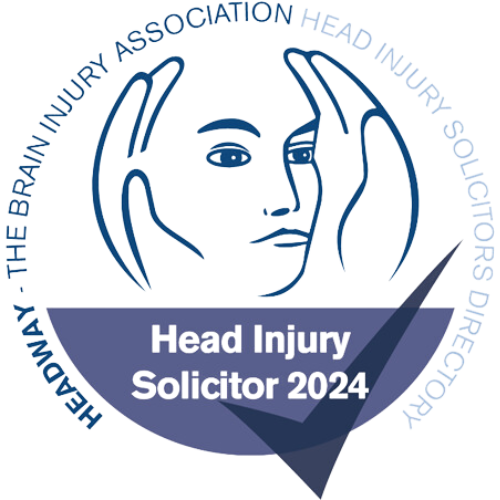Start your FREE Enquiry
The Whiplash Reforms – Take 2
14 June 2018
Eleven months to the day since the Prison and Courts Bill was scuppered by Teresa May’s disastrous general election, the personal injury reforms have resurfaced as Part 1 of the Civil Liability Bill. The Justice Secretary’s announcement on the 20th March declared that the reforms were necessary to tackle the compensation culture and to save motorists £35 year. However, this smokescreen hides a vindictive piece of legislation that sells out the rights of people who are injured and in return provides the insurance industry with a £1bn cash windfall.
The Bill is surprisingly vague with much of the detail being relegated to statutory instruments that have yet to be published. However, it does set out the main principles – to introduce a tariff of damages for whiplash and minor psychological claims of up to 24 months in duration, and to ban pre-medical offers.
A whiplash injury is defined as a soft tissue injury to the neck, back or shoulder and so the definition is wide enough to encompass the vast majority of injury claims targeted by these reforms.
The Bill is expressly aimed at people who are injured whilst travelling in motor vehicles, and so excludes motorcycles, cyclists and pedestrians, nevertheless these road users will be caught by the increase in the small claims limit to £5k. The rise in the small claims limit is not in the Bill but the accompanying documents confirm the legislation will be supplemented by an increase to £5k for all RTA claims and to £2k for all other injury claims.
The whiplash tariff
The whiplash tariffs are published in the updated Impact Assessment and have increased by around 5% since February 2017 when they were first published in the government’s response to the consultation.
The proposed figures are derisory. Based on the government’s figures the average current PSLA award for a soft tissue injury lasting less than 2 years is around £2600, however the proposed reforms will reduce this by 70% to around £800. The difference is most stark for injuries under 6 months and no doubt reflects the government’s aim of discouraging all minor RTA injury claims.
The Bill allows the courts to award more than the amounts set out in the tariff in “exceptional circumstances”. The uplift is not specified and there is no definition of “exceptional”, although the accompanying Impact Assessment suggests the uplift will be not more than 20%, leaving the door open for the courts to award less, and that its use will be “extremely rare and of negligible impact”.
The reforms differentiate between people who are injured in vehicles and those who are not. If your client suffers a soft tissue injury falling from a motorcycle or bicycle, or as a result of an accident at work, then they are legally entitled to an amount of damages that, as far as money can do it, puts them back in the position they would have been in had the accident not occurred. So your motorcycle client who suffers a soft tissue injury lasting 3 months will get around £2000, whereas a client who has suffered a similar injury whilst travelling in a car will get only £235.
Injured motorists will, of course, be aggrieved to learn that the government has decided they are not deserving of full compensation on the grounds it suspects they are all fraudsters, but they will, no doubt, be consoled by the £35 reduction in their annual insurance premiums.
The impact of the reforms on claimants
Claimants face a double whammy of having their compensation awards slashed and the removal of legal costs.
The increase in the small claims limit to £5000 removes legal costs for 94% of all injured RTA claimants. This means that unless a claimant has legal expenses insurance, they will only get legal assistance if they can pay for it out of their damages. The problem is that under the proposed tariff, which reduces compensation awards by on average 70%, the levels of compensation are so low that they do not support payment of any meaningful success fee.
Claimant’s will still expect a ‘no win no fee’ service, and that they won’t have to pay anything if the claim is lost, but this business model will not be economically viable for non-portal claims. The Bill mandates that injury claims must be supported by medical evidence and so every claim will have an underlying cost of £216 for a medical report. However, where an insurer disputes liability or quantum necessitating court proceedings, this cost is increased considerably. Court fees, based on an average tariff valuation, will add £150, and then there is the cost of processing a litigated case. We litigate hundreds of small claims every month and they are complicated and expensive with the courts requiring strict compliance with the rules on disclosure and evidence. These cases are time consuming and the insurer is always legally represented.
Claims on behalf of Children
The impact of the Bill on children, contrary to what is stated in the new Impact Assessment, is that they will not get legal representation.
This was acknowledged in the Impact Assessment that accompanied the 2016 whiplash consultation, but has been removed from latest version, presumably to make the reforms seem more palatable. The original assessment warned that raising the small claims limit could “adversely impact on children” because injury claims involving children “must be settled via the court” and they “may no longer be able to recover their legal costs”. Contrast that with the new Impact Assessment, which states: “it has been assumed that claims involving minors would still qualify for FT cost provisions, where legal fees remain recoverable from defendants”.
The reality is that following Court of Appeal decision in Dockerill v Tullett, costs cannot generally be recovered in cases that settle under the small claim threshold. Lord Justice Patten, who gave the leading judgment, stated: “I am very conscious that the practical consequence of this ruling may be to discourage solicitors from taking on CPR 21.10(2) proceedings involving small claims because they are unlikely in many such cases to be able to recover their costs”.
Claims involving children are more complicated and costly because every case has to be approved by a court order. Without legal representation it is very unlikely parents will be able to pursue these claims and, as a consequence, they will go uncompensated.
More unrepresented claimants
There will be a massive increase in the number of litigants in person (LiP) which will put further strain on an already over-stretched court system.
The insurance industry has been commissioned to build a user-friendly claims portal which, if ready on time, should assist with straightforward claims; however the government has not explained what will happen to claims that fall out of the portal. Around 50% of claims drop out of the current claims portal, with many doing so because insurers fail to respond on liability within the stipulated timeframe, or do not admit liability. With no evidence this pattern of behaviour will change, and with no financial incentive for insurers to keep claims in the portal, it is likely many of the predicted 100,000 LiPs will either abandon their claims or commence proceedings in the small claims track.
Those that continue will have to draft, file and serve their own court proceedings, comply with court directions concerning disclosure, filing of witness and expert evidence, and then attend court to argue their case against a legally represented insurance company.
Evidence given to the Justice Committee by the judiciary confirmed that these claims were time consuming compared with other cases and placed a “real burden” on judges and the court staff.
Before the Event (BTE) Legal Expense Insurance
The reforms create a two-tier justice system; one that provides legal assistance for those that can afford it or have legal expenses insurance, and another for everyone else.
The language used in the first Impact Assessment leaves no doubt the reforms are biased towards those who have legal expenses insurance, describing their lawyers as “panel law firms… that are favoured by defendants (insurers), as those will not try and unduly inflate claims”.
It is also clear the government sought to play down the damaging effect of the reforms by suggesting most people have BTE insurance. In the Impact Assessment published in November 2016, the government claimed that 70% of claimants have BTE insurance; however in the latest Impact Assessment that figure has been revised down to 50%. This figure may fall further because the reforms are expected to increase to the cost of motor legal expenses insurance.
As a consequence many more people than originally anticipated will not get legal representation. This will not affect those with BTE insurance because the government predicts the proportion of these cases will remain the same, however they expect the number of legally represented claimants who do not have BTE to fall by 55%.
Those with BTE insurance will need to look closely at the terms of their policies because, contrary to what the government believes, there is evidence that some BTE providers are providing only limited legal expenses cover for small track claims.
Overall predictions
- The reforms are likely to be implemented in October 2019.
- Claimants will struggle to use the insurance industries user-friendly claims portal and will be denied compensation as it struggles to overcome its “computer says no” default setting.
- Thousands of people injured in motor vehicle accidents will not be compensated.
- The small claims court will be inundated with unrepresented claimants.
- There will be thousands of redundancies within the personal injury sector.
- Motor insurance premiums will rise.
- Motor insurers will announce record profits.




